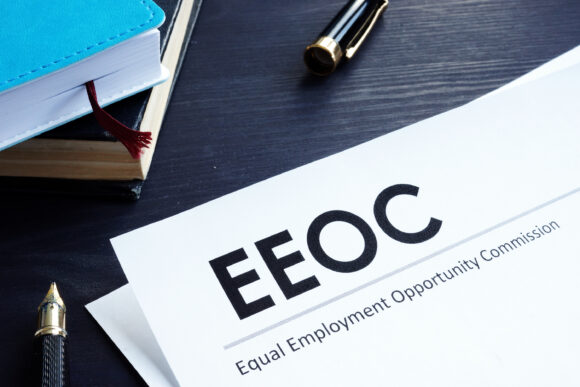The use of a form that identified an employee’s race as part of a company’s termination process was not evidence that the employer discriminated against him because he is white, a divided panel of the 11th Circuit Court of Appeals ruled Friday.
The 2-1 ruling was made in a high-profile case involving sexual harassment allegations against the former chief meteorologist for an Atlanta television station. The panel affirmed a US District Court judge’s decision to grant summary judgment in favor of Meredith Corp., owner of CBS46, in a racial discrimination lawsuit filed by former chief meteorologist Paul Ossmann.
“The presence of race data in the local station manager’s termination request is not enough for any jury to reasonably conclude that Ossmann’s sexual harassment conduct, much of which he admitted, was pretext for the true reason for Ossmann’s firing—his race,” the panel’s majority said in an opinion written by Britt C. Grant.

Ossmann, a 62-year-old white male, sued Meredith in 2019, charging that the television station’s Black general manager used sexual harassment complaints as a pretext to fire him so that he could hire a 37-year-old Hispanic woman to replace him and further the company’s diversity goals. He alleged that managers of the TV station ignored derogatory remarks that coworkers made about him because of his race.
According to Meredith, Ossmann told a female meteorologist at the station that he had dreamed about having sex with her. The meteorologist told managers that she had overhead Ossmann telling another female employee that “his first three-way was with a Black woman.”
Managers said they warned Ossmann to use better judgment, but six months later he sent a female news producer Facebook messages stating that he masturbated while thinking about her and asking for nude photos. Managers said they handed Ossmann a “final warning,” although Ossman said he did receive it.
The final straw came about 18 months later, when Ossman told a married female co-worker that he “looks at her all the time” because she is attractive and carries herself well, according to the company.
A Meredith policy required local managers with CBS46 to obtain approval from the corporate office before terminating employees. As part of that process, Meredith used a form provided by the US Equal Employment Opportunity Commission that included Ossmann’s age, gender and race.
Meredith’s vice president of human resources, Kandis Bock, approved Ossman’s termination after reviewing the completed form submitted by the HR manager for CBS46.
Ossmann contended that use of the form, called an “EEO Analysis,” was direct evidence of discrimination. Meredith executives, on the other hand, said the form is used to ensure that decisions about employee discipline are made equitably. The form includes questions about the age, sex and gender of other employees disciplined for similar conduct.
Judge Britt and 11th Circuit Judge Jill Pryor said use of the form did not show that Meredith discriminated against Ossmann because of his race.
“Ossmann’s only evidence that Bock intentionally discriminated against him, aside from the fact that he was replaced by a non-white woman, is the inclusion of race on the EEO Analysis form,” the opinion says. “This form does not remotely approach the amount of evidence necessary for a reasonable jury to conclude that Ossmann was fired because of his race.”
Judge Corey Maze, a US District Court judge for Northern Alabama assigned to hear 11th Circuit Court cases, dissented. He said EEO form was clearly used to conduct a “disparate impact analysis,” which is a means of determining the impact of human resources decisions on the racial balance of the workplace. He said use of the form, by itself, provides evidence that race was a factor in the decision to terminate Ossmann.
Maze said he would have concurred with the majority decision in full if the decision to terminate Ossmann had been made at the local level, with no involvement by the corporate office.
“But the decision to fire Ossmann did not stop at the local level; it ended at corporate HR,” Maze wrote. “And corporate wasn’t satisfied knowing that Ossmann sexually harassed women; corporate needed to know Ossmann’s race, and everyone else’s race, so that corporate could determine whether firing Ossmann would negatively impact racial group balance.”
Was this article valuable?
Here are more articles you may enjoy.


 Marijuana’s Move to Schedule III: What it Really Means for Cannabis Insurance
Marijuana’s Move to Schedule III: What it Really Means for Cannabis Insurance  LA Fires Push Insurers’ 2025 Disaster Losses to $107 Billion
LA Fires Push Insurers’ 2025 Disaster Losses to $107 Billion  Tesla Drivers Are Buying Escape Tools and Cars to Avoid Getting Trapped Inside
Tesla Drivers Are Buying Escape Tools and Cars to Avoid Getting Trapped Inside  Trump Sues BBC for $10 Billion Over Documentary Edit
Trump Sues BBC for $10 Billion Over Documentary Edit 